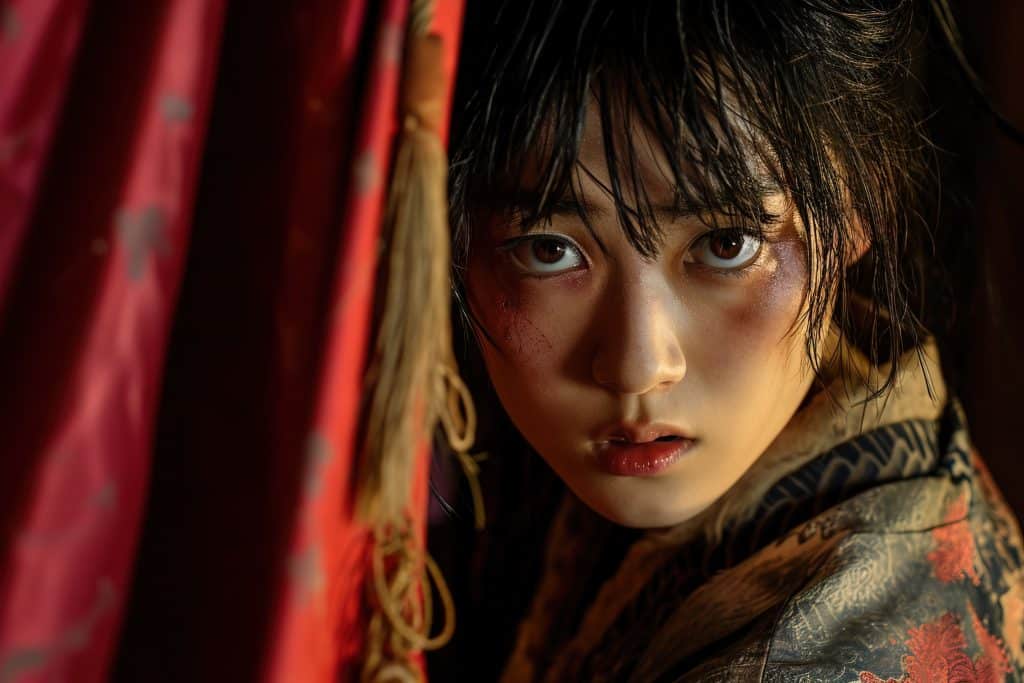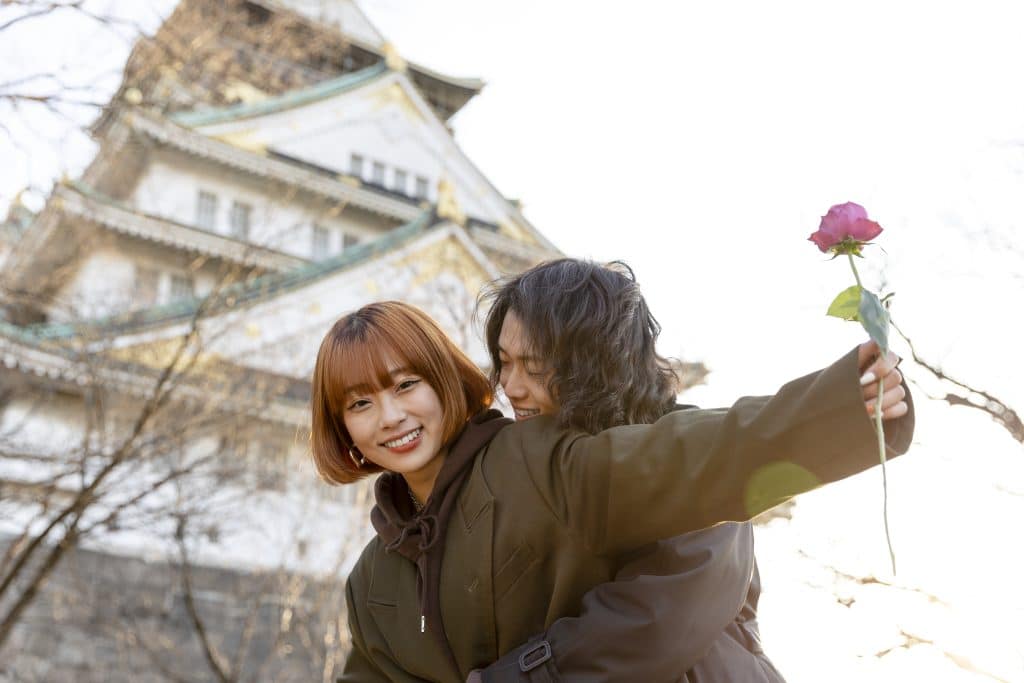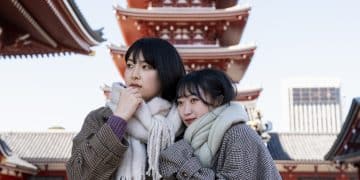9 Female Representation in Doramas: Modern Asian Dramas

Redefine Women’s Roles
🌸 The Changing Face of Women in Doramas
In the early decades of Asian television, women were often portrayed as dutiful daughters, self-sacrificing wives, or gentle nurturers. Their strength was quiet, their dreams secondary. But as societies evolved, so did storytelling.
Modern doramas — whether Japanese (dorama) or Korean (K-drama) — now present women as multifaceted individuals: ambitious professionals, complex romantics, and moral leaders. These characters reflect the transformation of gender roles in modern Asia and highlight the tension between tradition and progress.
💼 1. From Passive to Powerful: The Evolution of Female Roles
In the early decades of Asian television, female representation in doramas was shaped by traditional ideals of patience, virtue, and sacrifice. Classics like Oshin (1983) portrayed resilience through suffering — the heroine’s worth measured by how much she could endure in silence. These portrayals carried cultural significance, mirroring post-war societies where women’s strength was often expressed through quiet perseverance and family devotion.
Yet this image, though noble, confined women to narrow emotional spaces. The “good woman” archetype was expected to accept fate rather than transform it. She existed within a world where duty outweighed desire and conformity overshadowed individuality.
Modern doramas have decisively moved beyond this limitation. Today’s heroines embody a new generation of empowerment — one defined by voice rather than silence. They speak up, take control of their narratives, and refuse to be framed by societal norms. Instead of being celebrated for endurance alone, they are admired for ambition, intellect, and emotional honesty.
Shows like Unnatural (Japan) and Search: WWW (Korea) exemplify this evolution in female representation in doramas. The women in these stories are not supporting characters orbiting male success; they are the center of action — leading forensic teams, managing high-pressure tech companies, or questioning institutional authority. Their strength comes from self-awareness and courage, not from submission.
This shift reflects a broader social awakening. As women in Japan and Korea gain visibility in professional and public life, their on-screen counterparts echo that change. The once-idealized “perfect daughter” or “selfless wife” has given way to multidimensional protagonists — leaders, thinkers, and dreamers who challenge both cultural expectations and personal fears.
What makes this transformation powerful is its authenticity. Female representation in doramas is no longer about presenting flawless heroines, but about depicting real women with ambitions, doubts, and contradictions. They succeed, fail, and grow — mirroring the complex realities of modern womanhood across Asia.
In short, the evolution from passive to powerful marks not just a creative trend, but a cultural milestone. Doramas today use storytelling as social commentary, redefining femininity as strength, empathy, and independence combined.
Japanese Doramas | Thematic Analysis
❤️ 2. Redefining Love and Independence

For decades, romance has been the beating heart of Asian dramas — yet how it’s portrayed has changed dramatically. In earlier decades, female characters were often defined by their relationships to men, their worth tied to devotion, sacrifice, and the dream of marriage. Love was a reward for virtue, not a conscious choice.
Modern female representation in doramas breaks away from this pattern, introducing women who no longer wait to be chosen — they choose. The contemporary heroine approaches love not as salvation, but as self-expression. She seeks partners who respect her individuality and emotional boundaries, reshaping the narrative from dependence to mutual growth.
In Nigeru wa Haji da ga Yaku ni Tatsu (We Married as a Job), the protagonist Hiramasa and Mikuri enter a “contract marriage,” turning a conventional trope into a clever social critique. Through humor and sincerity, the series examines modern relationships, gender roles, and the blurred line between emotional labor and equality. Mikuri’s character embodies the new wave of female representation in doramas — thoughtful, self-aware, and unafraid to negotiate her happiness on her own terms.
Likewise, Because This Is My First Life (K-drama) offers a poignant reflection on what independence truly means. Its heroine, Ji-ho, rejects the societal expectation that women must marry to achieve stability. Instead, she navigates cohabitation and partnership with rationality and self-respect, proving that emotional fulfillment can coexist with autonomy.
These narratives symbolize a profound generational shift. The modern dorama heroine loves without losing herself. She values communication over sacrifice, equality over hierarchy, and authenticity over perfection. Rather than waiting for destiny, she creates it — redefining both love and selfhood in the process.
By portraying relationships rooted in respect and individuality, female representation in doramas helps dismantle long-standing myths about romance and gender. It teaches audiences that true love is not about rescue or surrender — it’s about recognition, trust, and growth between equals.
This evolution is not merely romantic but revolutionary. Through emotionally intelligent storytelling, modern doramas transform the idea of love into an empowering act of self-definition — showing viewers that independence and intimacy can thrive side by side
🌏 3. Women in the Workplace: Breaking the Glass Ceiling
One of the most powerful shifts in female representation in doramas lies in how women are portrayed within professional spaces. No longer confined to domestic roles or romantic subplots, modern heroines step confidently into offices, laboratories, and courtrooms — places once dominated by male authority. These characters redefine what success looks like, not just for women in fiction, but for an entire generation of viewers navigating real-world gender expectations.
In Haken no Hinkaku (Japan), Haken Haruko stands as an emblem of integrity and professionalism. Though she is a temporary employee — a “haken” worker with limited status — her competence, confidence, and refusal to compromise ethics make her indispensable. Haruko’s story is not about finding love or approval, but about asserting value in a system that often undervalues women. Her quiet rebellion against corporate hierarchy represents a broader statement about how female representation in doramas celebrates self-respect over submission.
Similarly, Search: WWW (Korea) offers one of the most dynamic portrayals of women in leadership roles. Bae Ta-mi and her colleagues dominate the digital marketing world, navigating office politics, workplace sexism, and generational conflicts. Their struggles reflect real issues faced by women in tech — a field where assertiveness is often mistaken for arrogance. Yet the drama’s emotional depth lies in how these women uplift one another, showing that female ambition can coexist with empathy and collaboration.
These series mirror real social transitions across Japan and Korea, where women’s participation in the workforce has grown steadily but remains shadowed by inequality. Unequal pay, limited promotion opportunities, and the expectation to “balance it all” continue to challenge women’s professional journeys. Through female representation in doramas, these realities become visible, sparking conversations about fairness, respect, and recognition.
The workplace in modern doramas serves as a microcosm of society itself. Issues like gender bias, burnout, and toxic corporate culture are explored through personal stories — humanizing what might otherwise remain abstract. By giving faces and voices to these struggles, doramas cultivate empathy and awareness, encouraging audiences to question the status quo.
Perhaps what makes this trend most empowering is its authenticity. These women are not portrayed as perfect superwomen who easily conquer discrimination; they stumble, face doubts, and sometimes choose unconventional paths to success. Yet it is precisely in this imperfection that their strength shines. They remind viewers that empowerment does not always mean dominating others — sometimes it means refusing to shrink oneself for the comfort of a system.
In redefining professional identity, female representation in doramas sends a clear message: success is not about fitting into a preexisting mold, but about reshaping it. Through courage, competence, and compassion, these modern heroines break glass ceilings — and rebuild them as skylights for others to see through.
🎭 4. Beyond Stereotypes: Diversity and Realism

As storytelling evolves, so too does female representation in doramas. Modern Asian dramas are no longer content with portraying a single “ideal woman.” Instead, they offer a diverse spectrum of female experiences that challenge traditional standards of beauty, behavior, and identity. The modern dorama heroine is not confined to youth, perfection, or domesticity — she is real, layered, and sometimes beautifully imperfect.
In the past, many dramas relied on rigid archetypes: the obedient daughter, the pure love interest, or the self-sacrificing mother. These figures reflected cultural values of loyalty and modesty but also reinforced narrow definitions of womanhood. Today, doramas push back against these conventions, giving space to women whose stories were once considered too ordinary, too controversial, or too complex to tell.
A striking example is Woman (Japan), which courageously explores the hardships of single motherhood. Its protagonist, Koharu, battles financial instability and social stigma while raising her children alone. Rather than framing her as a victim, the series portrays her resilience as a quiet form of heroism — a reminder that strength can exist in vulnerability. This kind of storytelling deepens female representation in doramas, proving that everyday struggles can carry profound emotional power.
Similarly, My Liberation Notes (Korea) captures the quiet despair and longing for freedom that many adults feel in modern society. Its female lead, Yeom Mi-jeong, is not a glamorous archetype; she is introverted, uncertain, and often overlooked. Yet her emotional honesty resonates with audiences worldwide, showing that authenticity is more inspiring than perfection.
These new narratives expand the boundaries of who can be seen and celebrated on screen. Doramas now include middle-aged women rediscovering purpose, older women confronting loneliness, and young women rejecting societal expectations altogether. From artists to scientists, from politicians to detectives, each character broadens female representation in doramas, illustrating that women’s stories are as varied and complex as the societies they reflect.
Another groundbreaking trend is the inclusion of LGBTQ+ and non-traditional female identities. While still subtle in many cases, these depictions signal a cultural shift toward empathy and inclusivity. Series such as Ossan’s Love (Japan) and Nevertheless (Korea) explore love and identity beyond heteronormative frameworks, opening conversations about acceptance and self-expression.
This growing realism does not aim to sensationalize difference — it seeks to humanize it. By portraying diverse women and life experiences, modern doramas foster emotional connection across generations and cultures. Viewers see themselves in characters who laugh, fail, question, and rebuild — and in doing so, they recognize that beauty lies in individuality.
Ultimately, female representation in doramas has become a powerful tool for empathy. By moving beyond stereotypes, these stories reflect the truth of contemporary womanhood: it is plural, imperfect, and endlessly evolving.
🪞 5. The Inner Journey: Emotional Intelligence and Self-Discovery
Among the most defining traits of female representation in doramas is their deep focus on inner transformation. While many Western narratives equate empowerment with visible triumphs — winning battles, achieving career milestones, or breaking free through dramatic rebellion — doramas take a quieter, more introspective path. They portray emotional intelligence as a form of strength, suggesting that self-awareness can be just as revolutionary as success.
The female journey in doramas is rarely about conquering others; it is about understanding oneself. These stories invite viewers to witness characters who navigate love, grief, insecurity, and purpose — not through grand gestures, but through moments of silence and reflection. Emotional growth becomes the true narrative arc.
This perspective is rooted in the Japanese concept of kokoro (心) — the heart, spirit, or inner self. It represents a harmony between emotion and reason, resilience and compassion. In modern doramas, female characters embody this principle through subtlety: a quiet pause before a decision, a gentle smile that hides strength, a tear that signals release rather than defeat.
In Mother (Japan), for example, a woman’s moral awakening drives her to protect a neglected child — not out of duty, but empathy. Her journey is not about external recognition but internal conviction, illustrating how female representation in doramas often celebrates moral courage over social approval. Similarly, in My Mister (Korea), the female protagonist endures hardship with remarkable emotional control. Her eventual healing does not come from revenge or escape, but from rediscovering her own worth through compassion and connection.
This emotional depth redefines what empowerment looks like on screen. Instead of glorifying defiance alone, doramas portray the quiet power of endurance, forgiveness, and empathy. They remind audiences that strength can coexist with softness — that kindness itself can be a radical act in a world that often rewards aggression.
What makes this evolution of female representation in doramas particularly compelling is its universality. Even across cultural and linguistic barriers, viewers resonate with these women because their struggles feel human and timeless. Whether facing family expectations, workplace injustice, or personal loss, these characters grow by turning inward — by confronting their fears, accepting imperfections, and choosing peace over pride.
In this way, the inner journey becomes both personal and collective. Doramas teach that empowerment is not only about speaking loudly but about listening deeply — to oneself and others. Through emotional intelligence and moral sensitivity, they transform vulnerability into wisdom, showing that the heart can be the strongest weapon of all.
🌼 6. Female Solidarity and Sisterhood

A defining and heartwarming shift in female representation in doramas is the growing emphasis on solidarity, friendship, and shared resilience among women. In earlier narratives, female characters were often positioned as rivals — competing for male affection, professional recognition, or social validation. Modern doramas, however, reject this outdated framework. They portray women as allies, not adversaries, and celebrate the quiet power that emerges when they uplift one another instead of competing.
This evolution marks a cultural turning point. It reflects not only changing gender expectations but also a broader societal understanding that empowerment is collective — that women’s growth often flourishes within circles of empathy and trust. Through nuanced storytelling, female representation in doramas now highlights mentorship, emotional support, and friendship as essential forces of transformation.
In Thirty-Nine (Korea), this theme takes center stage. The drama follows three women approaching their forties as they navigate love, career, loss, and mortality together. Their friendship becomes a sanctuary — a space where vulnerability is not judged but shared. The series beautifully illustrates that strength is not the absence of pain but the ability to face it with those who understand. It challenges the notion that a woman’s worth fades with age, instead celebrating emotional maturity, loyalty, and the enduring beauty of connection.
Japanese doramas like Tokyo Tarareba Musume and Hirugao echo this sentiment in different tones. Tokyo Tarareba Musume portrays women reflecting on missed opportunities and societal pressure to “have it all” before forty. Yet beneath the humor and regret lies a profound message: life is not a competition, and companionship often matters more than perfection. Meanwhile, Hirugao takes a more introspective route, examining how women support or silently judge each other in a society bound by moral codes. Its layered portrayal invites viewers to question how empathy can coexist with cultural constraint.
These narratives embody the emotional depth of female representation in doramas — showing that friendship itself can be revolutionary. In cultures where conformity and restraint have long shaped social interaction, the act of women sharing their inner worlds becomes an act of defiance. Whether through laughter over drinks, heartfelt confessions, or mutual understanding in silence, these stories depict connection as the ultimate form of healing.
Sisterhood in doramas transcends age, class, and even geography. From young colleagues finding courage in Search: WWW to mothers supporting each other in Woman or Mother, these portrayals affirm that empowerment is rarely a solo journey. Women thrive when they see themselves reflected in one another — when they can say, “I understand you,” without judgment.
By weaving themes of solidarity and compassion into their plots, modern doramas expand the emotional vocabulary of empowerment. They remind audiences worldwide that feminism is not just about independence, but also interdependence — the courage to rely on others without losing oneself.
Ultimately, female representation in doramas redefines sisterhood as a source of strength, wisdom, and renewal. These connections — raw, honest, and imperfect — resonate deeply with global audiences because they reflect a universal truth: no one heals or grows alone.
💫 7. Balancing Tradition and Modernity
One of the most fascinating aspects of female representation in doramas is how it navigates the delicate balance between honoring tradition and embracing modernity. Asian dramas — especially Japanese and Korean — often carry the philosophical echoes of Confucianism: harmony (wa), filial duty (oya kōkō), humility, and emotional restraint. These values continue to shape how women are portrayed, but modern doramas reinterpret them through contemporary lenses, turning inherited ideals into instruments of empowerment rather than limitation.
In earlier generations, women in dramas were expected to embody wa — social harmony and self-sacrifice. Their virtue was tied to their ability to maintain peace at the cost of personal ambition. Today, female representation in doramas transforms that expectation. Harmony no longer means silence; it means balance — the ability to assert individuality while maintaining compassion. The modern heroine honors her family and community, yet refuses to lose herself within them.
This evolution is beautifully illustrated in Mother (Japan), where the protagonist, Nao, redefines motherhood not through biology but through empathy and choice. By rescuing and nurturing a neglected child, she challenges traditional definitions of maternal duty while preserving the moral essence of care and love deeply rooted in Japanese culture. Her act of compassion becomes both rebellion and reverence — a reminder that tradition can be reinterpreted to serve justice and humanity.
In Crash Landing on You (Korea), the balance takes a different form. Yoon Se-ri, a South Korean entrepreneur, finds herself stranded in North Korea, where her independence collides with a culture of restraint and collectivism. Over time, she learns that strength and vulnerability are not opposites but complements — that emotional openness can coexist with discipline. Through her story, female representation in doramas bridges two worlds: progress and tradition, individualism and community, ambition and empathy.
These characters do not reject their cultural roots; they evolve them. They embody a modern Asian womanhood that is dynamic and self-aware — capable of questioning norms without abandoning respect for heritage. This nuanced portrayal resonates deeply across societies where women continue to negotiate the dual expectations of being modern yet modest, ambitious yet dutiful.
What makes female representation in doramas so impactful is this ability to turn tension into transformation. Rather than presenting tradition as an obstacle, doramas treat it as dialogue — a conversation between past and present, elders and youth, restraint and freedom. Through this dialogue, heroines craft new identities that reflect both continuity and change.
Ultimately, this balancing act defines the heart of modern Asian storytelling. By blending reverence for the old with the courage of the new, female representation in doramas becomes a living bridge between generations — proof that progress, when rooted in respect, can strengthen rather than divide.
📺 8. Global Influence: Women as Cultural Ambassadors

As doramas reach international streaming platforms, these portrayals shape how global audiences perceive Asian women. They dismantle the stereotype of the submissive or mysterious figure, replacing it with multidimensional characters — relatable, flawed, and inspiring.
Western viewers, drawn by emotional authenticity, find in these stories a refreshing counterpoint to hyper-sexualized or overly dramatic female portrayals common in some Western media.
Through their subtle strength, doramas are quietly rewriting global narratives of femininity.
👉 Further reading: Thematic Exploration of Identity
🧭 9. Cultural Reflection: What These Stories Tell Us
The evolution of female representation in doramas is not only a matter of media trends — it’s a reflection of changing societies. As women gain greater educational and professional opportunities, television mirrors that shift, capturing both progress and backlash.
By blending realism with emotion, doramas invite viewers to reflect on universal themes: how women balance duty and desire, how love transforms with equality, and how modern identity is built from fragments of old values and new dreams.
🌹 Conclusion: Empowerment in Every Gesture
Modern doramas prove that empowerment wears many faces.
It can be a woman leading a team with confidence, or a mother rebuilding her life after loss. It can be a scientist fighting prejudice, or a friend offering silent comfort.
Through these narratives, female representation in doramas becomes more than visibility — it becomes a cultural dialogue about freedom, empathy, and resilience.
And in that quiet power, audiences everywhere find both reflection and inspiration





